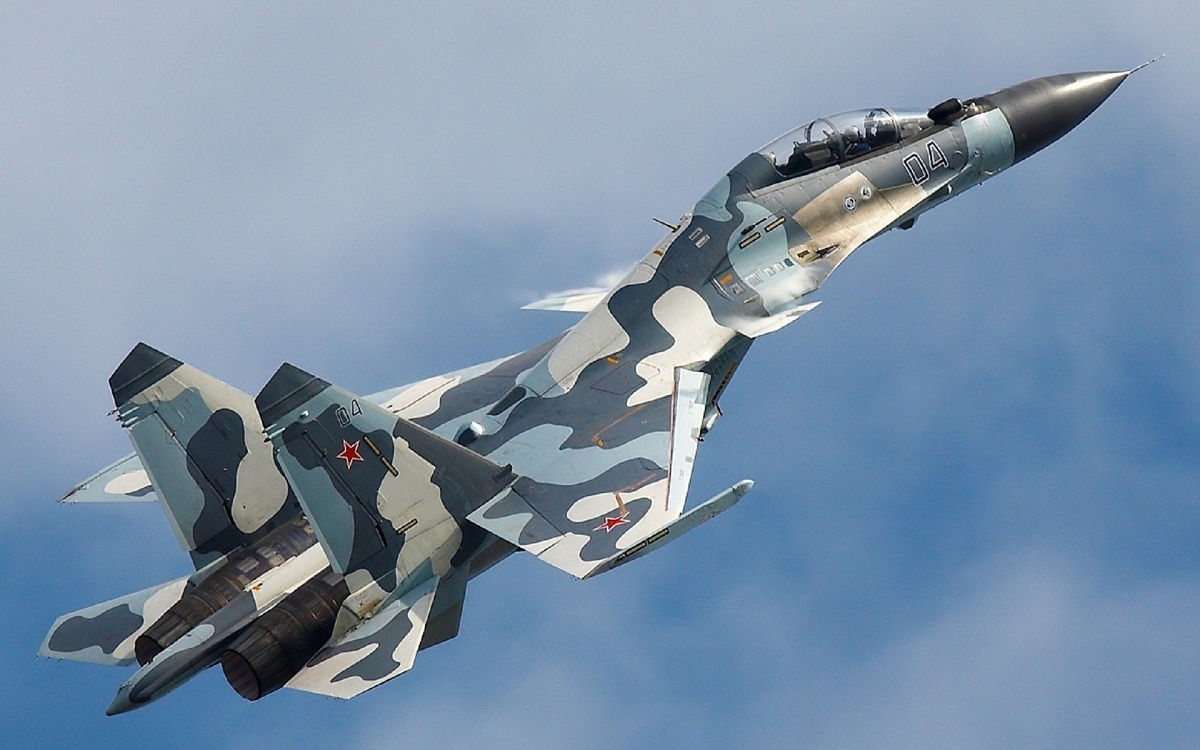Has Russia’s Air Force finally turned the corner in Ukraine? Did a Russian Su-30 recently shoot down a Ukrainian Su-27P fighter? We know the Ukrainian fighter crashed and burned on June 5. The Ukrainian military confirmed the crash, although Kyiv has not disclosed exactly what happened. The Ukrainian fighter went down over Orikhiv, in the Zaporizhzhya oblast. It was likely downed by a Russian fighter, and this would probably have been a Su-30.
You can see photos of the Su-27P destruction here. Dogfighting between the two air forces has intensified over the Donbas region in recent days, with a Ukrainian MiG-29 shot down near Slovyansk in the separatist Donetsk People’s Republic on June 6.
Russia Winning in the Sky?
It’s not clear what type of fighter destroyed the MiG, but it seems Russian pilots have improved their performance over the skies of the Donbas. They usually have superior airplanes with modern technology, but in the early stages of the war, Ukrainians displayed bravery and surprisingly good dogfighting skills.
The Su-30 is the stud horse in the Russian corral of fighter planes. Moscow relies on this fighter to lead its air force in aerial combat. It evolved from the Su-27 fighter. The S-30SM, the most common variant, is considered a fourth generation-plus fighter, and it made its first flight in 2012.
The Su-30SM has two Saturn AL-31FP engines that enable a speed of Mach-2. The Su-30SMs have excellent range and can fly combat missions for five hours. In-flight refueling increases its flight time to 10 hours.
The avionics and sensors are better than earlier iterations of the fighter. The communications system is improved, and it has decent jamming pods. Su-30SMs carry air-to-air and air-to-surface missiles, in addition to laser-guided and dumb bombs. The Russians have about 100 Su-30SMs.
How Much Dogfighting Is Going On?
Dogfighting has been difficult to track in the Russo-Ukrainian War. Both sides trumpet victories, but many of the downed fighters were probably hit by surface-to-air missiles. Russia claims they have shot down 179 warplanes, while the Ukrainians believe they have downed 206. These numbers are difficult to confirm. After so many early losses, Russia also decided to fly some of its fighters and bombers outside Ukrainian territory and launch stand-off missiles. This has reduced the number of its jets getting shot down.
The Ukrainians usually scramble their fighters into the skies quickly, sometimes without even doing pre-flight checks. They are often challenging greater numbers of enemy fighters. Pilots from Russia have more combat experience, having flown over Syria. But those missions were often bombing runs that met with no resistance from air defense systems. In Ukraine, they have to deal with anti-aircraft interceptors from the ground and determined Ukrainian pilots who are fighting like banshees to protect their homeland.
Is Russia Roaring Back in the Air?
At the start of the war, the Russians struggled in dogfights against the Ukrainians. But they seem to have adjusted. They are now using bombs and air-to-surface missiles against Ukrainian positions and civilian targets, along with close air support. The report of a Ukrainian Su-27P fighter getting shot down could portend a different phase of aerial combat – one in which the Russians are getting better at dogfighting and are able to venture into Ukrainian air space at will to finally achieve the air dominance they have thus far been unable to establish. The Donbas phase of the war may mean more fighter jets from both sides taking to the skies as ground combat reaches a critical stage. Thus, aerial combat is becoming more decisive. This is something to watch as the war grinds on.
Now serving as 1945’s Defense and National Security Editor, Brent M. Eastwood, PhD, is the author of Humans, Machines, and Data: Future Trends in Warfare. He is an Emerging Threats expert and former U.S. Army Infantry officer. You can follow him on Twitter @BMEastwood.

